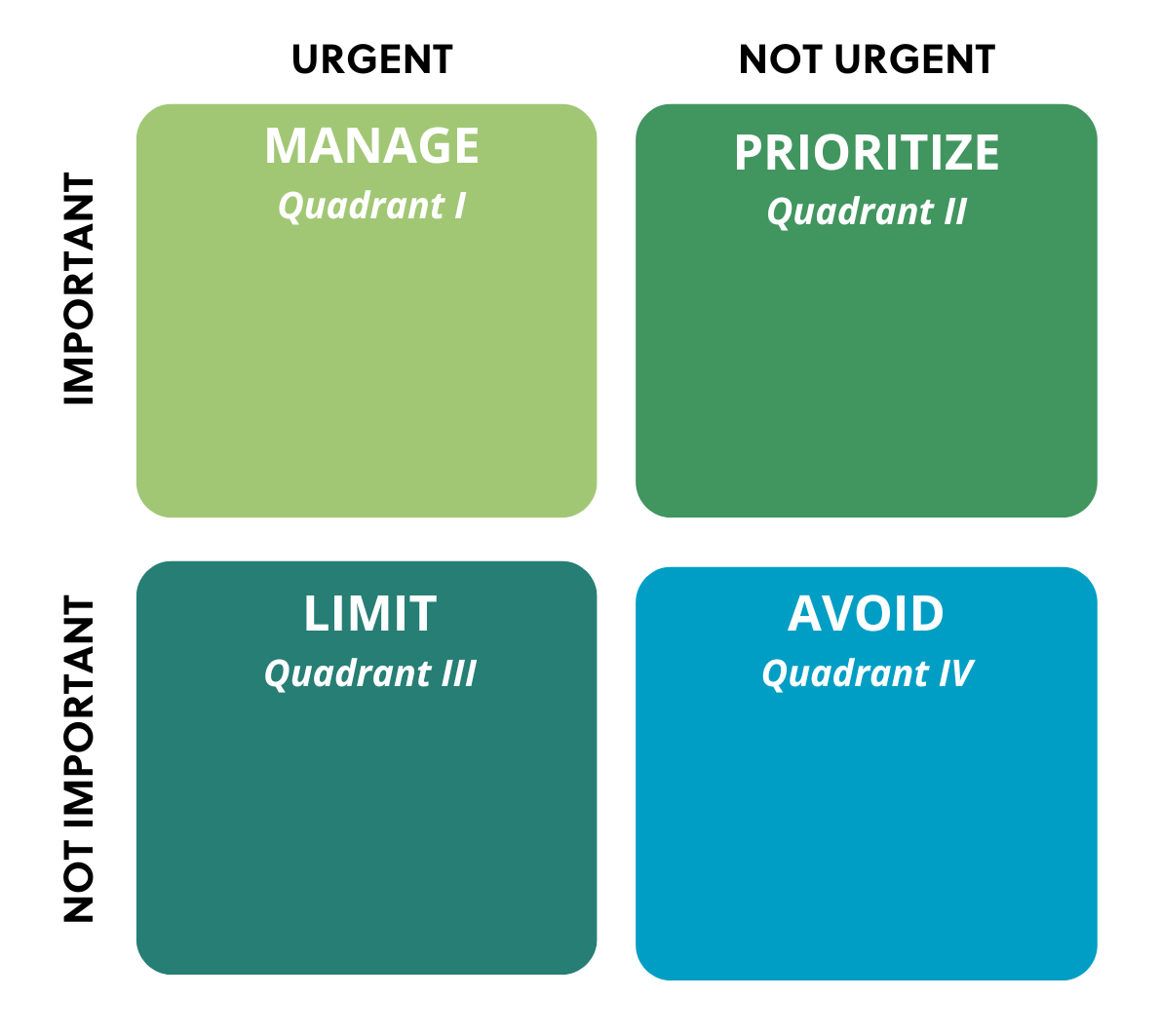Ever feel like everything is important and urgent, and your brain just freezes? That’s where the Covey Quadrants (aka the Eisenhower Matrix) can be a game-changer. It’s a simple way to get all those swirling to-dos out of your head and into a clear structure so you can stop spinning and start making moves.
I used it myself just this week. With a ton of competing priorities in work and life, I was feeling overwhelmed and stuck. So I paused, made a big messy list of everything on my plate, and used the Covey Quadrants to sort it all out. I spent maybe 15 minutes on it, but the relief and clarity it gave me was huge. Even better, I was able to schedule things in a way that felt realistic and doable.
Quadrant I: Urgent + Important
Tasks that are on fire and really matter. These need immediate attention. Manage the time you spend on tasks in this quadrant so you don't become overwhelmed.
Quadrant II: Not Urgent + Important
Long-term, goal-aligned tasks that deserve your time before they become urgent. Prioritize time for these tasks so they don't take a backseat to urgent tasks.
Quadrant III: Urgent + Not Important
Tasks that feel pressing but don’t truly move the needle. Limit the time spent on these task. They are often distractions or things you can delegate.
Quadrant IV: Not Urgent + Not Important
Time-wasters that don’t really serve you. Avoid spending time on tasks in this quadrant.

Beginning with Quadrant I is often necessary. Blocking time for Quadrant II makes it more likely that you will actually spend time on those crucial priorities with the greatest long-term value. Limiting number of times per day and total amount of time for Quadrant III orients you toward the higher-value activities in I and II. Quadrant IV is not necessarily “bad” and can be used for breaks.
For my Urgent + Not Important tasks, I added a little note in parentheses to remind myself why they still have some value (even if they’re annoying). That small reframe helped me stop procrastinating.
And for my Not Urgent + Important tasks, I added when I would do each one right on my to-do list. Then I transferred those into my planner. Normally I don’t go that far, but this time I gave it a try, and wow, it worked. Coaching the coach, MAP-style!
If you’ve already used this tool, how do you make it work for your brain? Any ADHD-friendly tweaks you’d recommend?


